My diary
Chapter 12: The Liberian Pledge of Allegiance
Tuesday and Wednesday
July 16 & 17, 2019
Tuesday was a “between classes” day. Spent the morning at the house, the afternoon at the Save the Children offices, and visited the Liberian National Museum. Wednesday morning was all about teaching at AME.
As mentioned before, my “office” at Save the Children is a workspace/office directly adjacent to Jay’s office. I sit at my desk, looking through the windows as workers walk from door to door and meeting to meeting. On the
colintaufer
14 chapters
16 Apr 2020
Chapter 12: The Liberian Pledge of Allegiance
Liberia
Chapter 12: The Liberian Pledge of Allegiance
Tuesday and Wednesday
July 16 & 17, 2019
Tuesday was a “between classes” day. Spent the morning at the house, the afternoon at the Save the Children offices, and visited the Liberian National Museum. Wednesday morning was all about teaching at AME.
As mentioned before, my “office” at Save the Children is a workspace/office directly adjacent to Jay’s office. I sit at my desk, looking through the windows as workers walk from door to door and meeting to meeting. On the
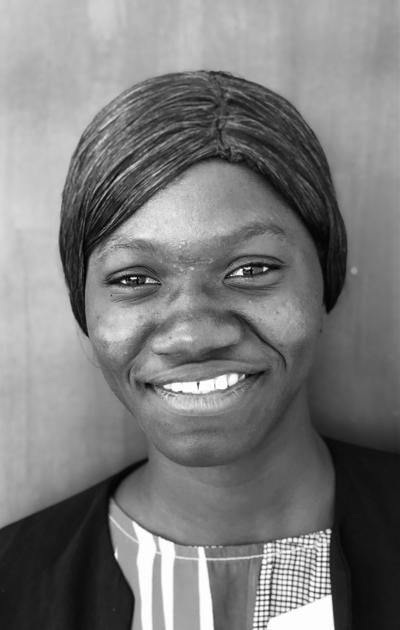
other side of the hall is a conference room with big windowed walls. For the past three days this room has hosted a series of workshops and meetings. There are a few staff I smile at or wave to. One person from the HR/Admin Team I have become friendly with since asking to take her picture the other day. I found her to be striking. Her name is Martu Kollie.
Late Tuesday afternoon Jay arranged for someone to drive me to the Liberian National museum downtown. We visited the museum when we were here in 2016. Since then it has been remodeled. I was happy to get a look at its new face. The 2016 version lacked A/C and had squishy floors that felt as if they were going to cave in. The 2019 version has proper A/C and new flooring throughout. More importantly, its displays are professional, more complete, and arranged in chronological
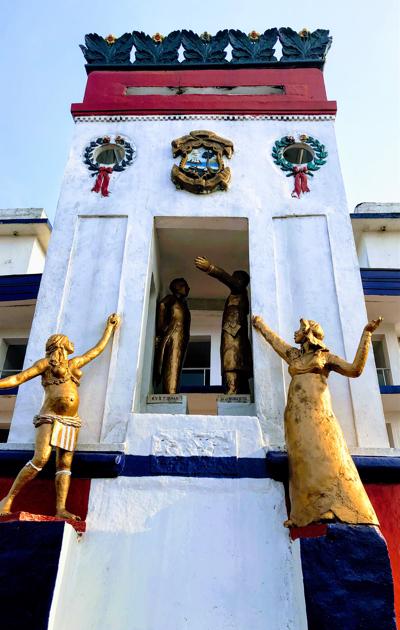

fashion. It’s not a large museum, three compact floors hold all of its displays. The presentations I found most interesting were the traditional tribal masks and artifacts and the historical timeline. In my simple view, I’d say Liberian history can be divided into five eras.
The original indigenous tribes rule the land in separate kingdoms for as long as anyone can remember, each with their own customs, languages, masks, and rulers. The area became known as the Spice Coast for its valuable peppers it harvested and traded.
Between 1822 and 1847, former American slaves arrive for colonization and subsequently subjugate the natives, causing endless friction between the two groups.
On July 26, 1847 a new republic is formed, the first Western-styled republic in Africa, and grows for over a century.
Back to back civil wars tear the country apart from ‘89 to ‘97 and ‘99 to ‘03.
The country rebuilds, highlighted by the election of Ellen Johnson Sirleaf, the first female head of state in Africa who was president from 2006 - 2018, and the Ebola crisis in 2014 and 2015.
I had my own personal tour guide for the museum. Glad I did. He walked me through all the exhibits in the correct sequence. The one display I spent the most time at was probably two screens showing black and white movie footage from 1926. They depicted people and places from all over the Liberia doing everyday activities. Photography was not allowed in the museum as many signs and my guide made clear. However, halfway through our tour, when we were behind a large display wall, he told me, in a hushed voice, that for $5.00 a shot I could take pictures. I didn’t, much to his dismay. Outside the museum, on the grass near a monument, rest two vintage Mercedes. One is a stretch limo, the other a boxy jeep. These are museum pieces. They were the favorite cars of cruel leaders from each of the civil wars, Doe and Taylor.
In the evening, we spent a restful hour at the RLJ hotel playing with Myia and eating french fries. I had a good time with her. We went outside, we drew on the menu chalkboard in the dining room, we stacked Jenga blocks, we played tag in the mirror, we tried to touch the lights hanging from the ceiling. According to Jay, all this play paid off. Myia had a good night’s sleep. A plus!
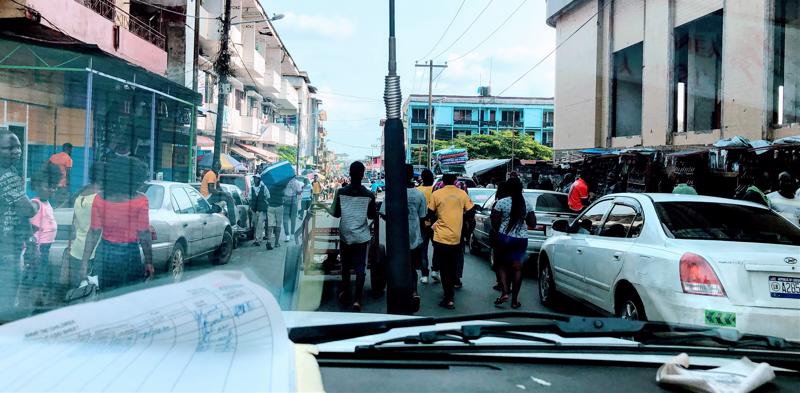
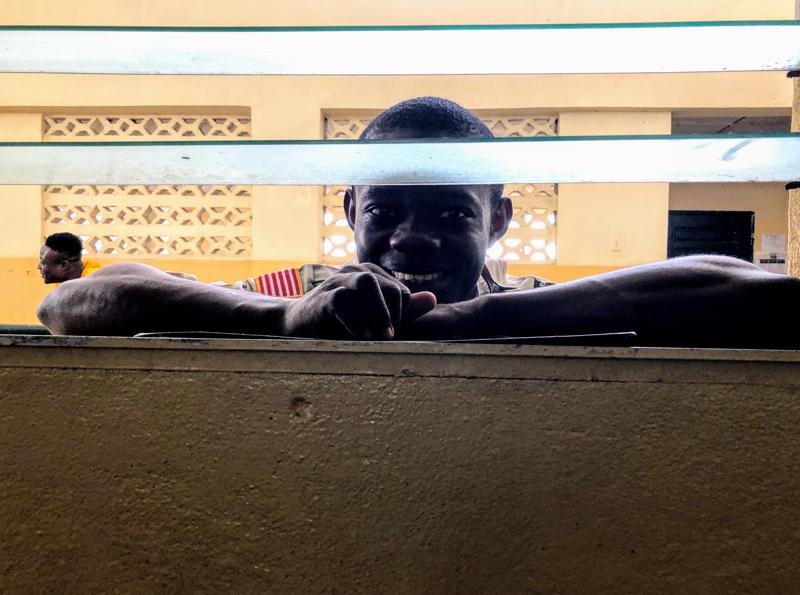

Wednesday morning and I found myself back at AME room 56 ready for the day’s class. As has become the custom, the first part of the lesson was showing photos of the students in action at Monday’s class. There were many great shots, lots of smiles, many clay people experiencing misunderstood words. We reviewed the most important parts from the previous class. Next we cleared the word “entrepreneur”. This was done by first asking students what they thought the word meant. The wide variety of answers followed by me showing them the dictionary definition, helped make the point, I hoped, that words have specific definitions. This was followed by a short video telling the story of an eleven year old female entrepreneur from Detroit.
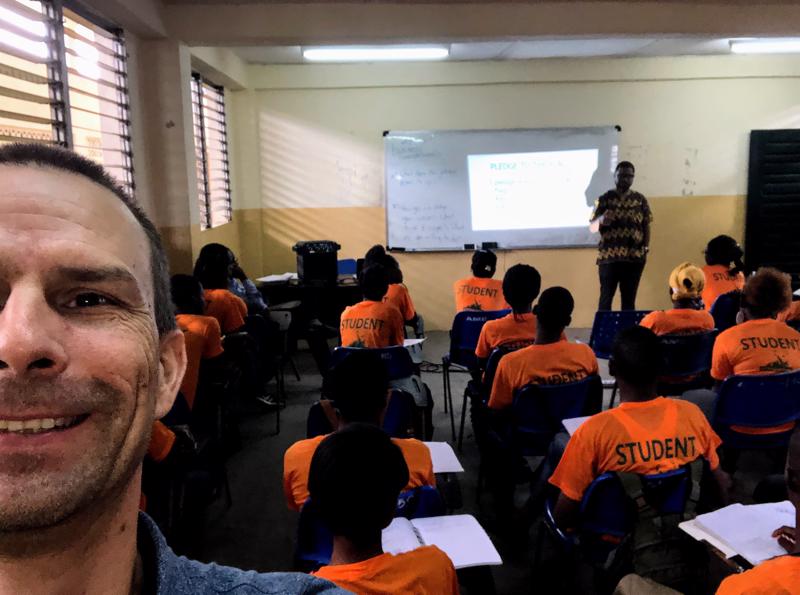
Then we got to the meat of the day’s lesson, digging into the Liberian pledge of allegiance. We talked through, then cleared the key words: pledge, allegiance, republic, indivisible, liberty, etc. Anthony was very helpful with this lesson. He helped field student answers for word definitions while I wrote them for all to see on the screen. Near the end of this lesson Jay arrived. His portion of the presentation dove-tailed perfectly with the theme. His gift in speaking to students is getting them to think deeply and relate the lesson to their personal lives as young Liberians and as citizens of the country. He gave great examples, told funny stories, stressed the importance of fully understanding the words to understand the message. The students ate it up. He left them with the assignment — due on Friday — of what the Liberian pledge now means to them and what they are going to DO to support it and their homeland.
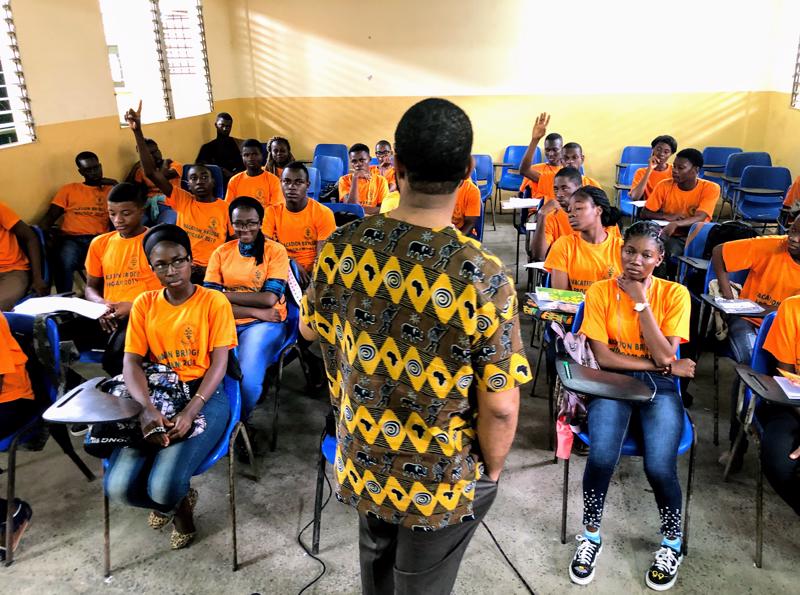
Great stuff.
1.
Chapter 1: North America, Europe, Africa
2.
Chapter 2: A Day in Monrovia, A Day with Jay
3.
Chapter 3: AME, First Class
4.
Chapter 4: Save the Children and AME Day 2
5.
Chapter 5: Chill and Road Trip
6.
Chapter 6: Higher Ground and the New Georgia Baptist Church
7.
Chapter 7: Presence of Mass and Fun
8.
Chapter 8: AME!
9.
Chapter 9: RLJ to Jay’s and AME Friday
10.
Chapter 10: Road Trip
11.
Chapter 11: Monday at AME
12.
Chapter 12: The Liberian Pledge of Allegiance
13.
Chapter 13: Colin’s AME Farewell
14.
Chapter 14: An Afternoon in Bomi